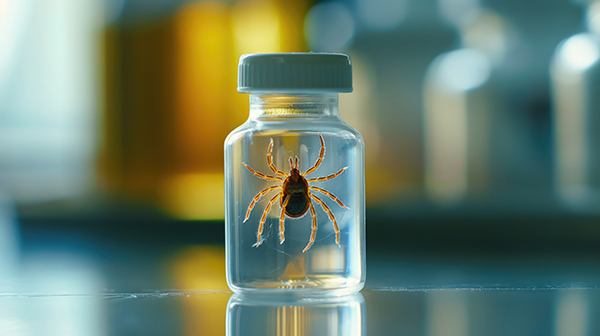Collecting a sample
The quality of the sample affects the quality of the identification. Generally, the more specimens the better. It is usually best to kill and preserve insects before shipping to prevent damage to them. Most insects can be killed in a freezer or by placing them in a vial containing 70% alcohol (ordinary rubbing alcohol). Mites and small insects like ants can be collected using a Q-tip or a small paint brush dipped in alcohol. Most insects can be preserved in alcohol, although adult moths and butterflies are best kept dry. Dry insects are brittle, so carefully pack them in a container with soft tissue to prevent breaking. For plant-feeding mites, it is often helpful to send a portion of the sample preserved in a vial of alcohol, and also a live sample of the mites and their host plant in a sealed zip-top bag.
For many insects, identification to species can only be made using the adult stage. Sending live immatures along with some host plant material may enable specimens to be reared to the adult stage, if necessary. Samples containing plant material and/or live insects will arrive in better condition if dropped off in person or mailed early in the week using priority mail or an overnight carrier. If you have an insect that you suspect could be a new exotic or invasive species please contact the Insect ID Lab in advance.

Packing and sending your sample
Once the sample is in a vial, plastic bag, or other small, sealed container, place it in a crush-resistant container like a mailing tube or small box. Use bubble wrap, Styrofoam peanuts, or newspaper to pack your sample in the box. Make sure that any vial containing alcohol is closed tightly to prevent spilling. Sending dry insects in a flat envelope is the worst way to submit a sample. Even padded envelopes provide little protection unless the insects are first placed inside a sturdy container. If your insects are feeding on plants, enclose some plant material and feeding damage, if possible. Plant material should be wrapped in a dry paper towel, and placed into a plastic bag. This prevents the leaves from getting too dry, while absorbing excess moisture to prevent mold.
Your package with the specimen must contain a completed submission form. Please fill out the submission form as completely as possible. Write in pencil or permanent ink that will resist smearing in case the form gets wet, or place the form in a separate sealed zip-top bag. Payment of the diagnostic fee is required before a diagnosis can be provided.
We accept multiple forms of payment. The diagnostic fee is $15 per sample.
The submission form can be found HERE.